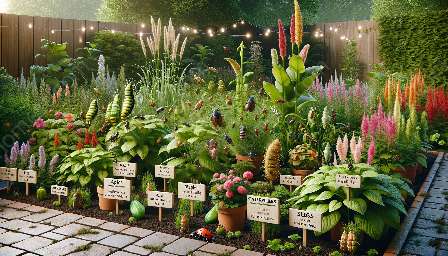Plants are susceptible to various diseases that can affect their growth and overall health. Identifying these diseases and understanding their symptoms is crucial for effective pest control and maintaining a healthy garden. This guide explores some of the most common plant diseases and offers practical tips for prevention and treatment.
Identifying Common Plant Diseases
Understanding common plant diseases and their symptoms is essential for any gardener. By recognizing the signs of disease, you can take proactive measures to protect your plants and preserve the beauty of your garden. Let's explore some prevalent plant diseases.
Powdery Mildew
Powdery mildew is a common fungal disease that affects a wide range of plants, including roses, cucumbers, and zucchinis. It appears as a white or gray powdery coating on the leaves, stems, and fruits of the plant. In severe cases, it can cause leaf distortion and premature leaf drop.
Leaf Spot
Leaf spot is caused by various fungal and bacterial pathogens. It manifests as circular or irregularly shaped spots on the leaves, which may be yellow, brown, or black. As the disease progresses, the spots can coalesce, leading to leaf yellowing and defoliation.
Root Rot
Root rot is a common problem in plants grown in waterlogged or poorly drained soil. It is caused by fungal pathogens that attack the plant's roots, leading to stunted growth, wilting, and eventual plant death. Affected plants may exhibit yellowing or browning of the leaves and a general decline in vigor.
Blossom End Rot
This condition primarily affects tomatoes, peppers, and other fruiting vegetables. It is characterized by dark, sunken lesions at the blossom end of the fruits. Blossom end rot is often caused by calcium deficiency or fluctuating moisture levels.
Diagnosing Plant Diseases
When your plants show signs of distress, it's important to accurately diagnose the underlying cause. While visual symptoms can sometimes indicate a specific disease, it's beneficial to use diagnostic tools such as home test kits or consult with a local agricultural extension office for professional guidance.
Preventing and Treating Plant Diseases
Maintaining good garden hygiene and implementing preventive measures can significantly reduce the risk of plant diseases. Here are some tips for preventing and treating common plant diseases:
- Prune and dispose of infected plant parts to prevent the spread of diseases.
- Avoid overhead watering to reduce humidity levels and minimize fungal growth.
- Apply organic or chemical fungicides as recommended for specific diseases.
- Plant disease-resistant varieties to minimize susceptibility.
Pest Control and Plant Diseases
Effective pest control is closely linked to the management of plant diseases. Many pests act as vectors for disease-causing pathogens, contributing to the spread of infections in gardens. By practicing integrated pest management (IPM) techniques and being proactive in pest control, gardeners can create a more resilient and disease-resistant garden environment.
Conclusion
By understanding common plant diseases and their symptoms, you can take proactive measures to safeguard your garden and ensure the well-being of your plants. Implementing effective pest control strategies, practicing good garden hygiene, and staying informed about disease management techniques are essential for maintaining a thriving garden.



















